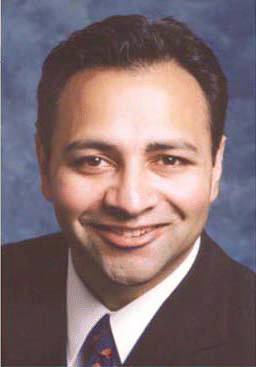Some patients may have localized discomfort over the cheek, as well as problems with recirculation of mucous between the maxillary natural ostia and an accessory ostia, said Ian Witterick, MD, Associate Professor of Otolaryngology at the University of Toronto in Ontario, Canada.
Explore This Issue
May 2006If this is the problem, then “suctioning out the mucous or connecting the two ostia surgically to promote proper drainage may improve the symptoms,” he said. Dr. Fried’s sample case likely wasn’t this sort of problem, though.
CT scans don’t always show whole story, though. Dr. Fried’s patient had more extensive disease than CT scans had revealed. The disease was bilateral but the CT showed only unilateral problems. Solving the case required surgery, he said.
“There are times when even with the most objective data, you sometimes have to put it aside. We are all concerned about operating on negative scans, but we have to remember we’re not operating on the scans but a patient,” Dr. Fried said.
Comparing debridement to saline solution for postoperative care, Dr. Parikh said, “I had not seen any significant difference in outcome between the two different modalities of care.” – —Sanjay Parikh, MD
Bleeding Complications
The second case presented was of a patient with a history of progressive left nasal obstruction unresponsive to steroids, and intermittent left epistaxis. Studies showed a unilateral soft tissue mass lesion in the back of the nasopharynx that involved the sphenoid. A resection was done, but a week later the patient started to bleed.
Panelists agreed further surgery was needed to find, and stop, the bleeding source. Another CT should be done. “If there is a lot of bone over the carotid I’m not too worried about the carotid being the source of the bleed. If there is no bone over the carotid, I would probably get an angiogram prior to going to the OR,” Dr. Palmer said.
However, there was some debate as to whether embolizing the bleed during angiogram was a good idea. Dr. Witterick suggested embolization be done if the bleed source was found, while Dr. Palmer advised caution with this because of a possible increased risk of stroke.
Dr. Fried reported that an angiogram was done, the bleed was found and embolization performed.
Handling Preoperative Consent
A third case was of a 62-year-old male with a long history of sinus headache, recent episodes of epistaxis, nasal polyps, and no relief from nasal steroids. There was a polypoid mass obstructing the right nasal cavity, left septal deviation, and no purulent discharge. A CT scan revealed a unilateral soft tissue mass causing diffuse opacification with some aeration in the maxillary sinus. The question posed to panelists was what consent should be done?

Leave a Reply